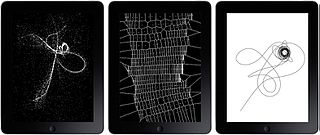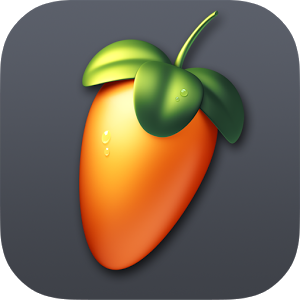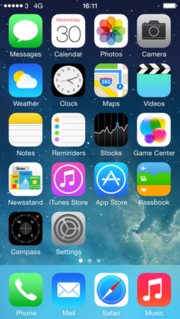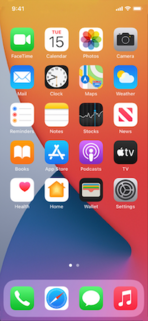
The graphical user interface is a form of user interface that allows users to interact with electronic devices through graphical icons and audio indicator such as primary notation, instead of text-based user interfaces, typed command labels or text navigation. GUIs were introduced in reaction to the perceived steep learning curve of command-line interfaces (CLIs), which require commands to be typed on a computer keyboard.
Steinberg Media Technologies GmbH is a German musical software and hardware company based in Hamburg with satellite offices in Siegburg and London. It develops music recording, arranging and editing software, notably Cubase and Nuendo. It also designs audio recording, MIDI hardware interfaces, controllers, and iOS/Android music apps including Cubasis. Steinberg created several industry standard music technologies including the Virtual Studio Technology (VST) format for plug-ins and the ASIO protocol. Steinberg has been a wholly owned subsidiary of Yamaha since 2005.

GarageBand is a line of digital audio workstations for macOS, iPadOS, and iOS devices that allows users to create music or podcasts. GarageBand is developed and sold by Apple for macOS, and is part of the iLife software suite, along with iMovie and iDVD. Its music and podcast creation system enables users to create multiple tracks with pre-made MIDI keyboards, pre-made loops, an array of various instrumental effects, and voice recordings.

A MIDI controller is any hardware or software that generates and transmits Musical Instrument Digital Interface (MIDI) data to MIDI-enabled devices, typically to trigger sounds and control parameters of an electronic music performance.

Scott Snibbe is an interactive media artist, entrepreneur, and meditation instructor who is currently the host of A Skeptic's Path to Enlightenment meditation podcast. He has collaborated with other artists and musicians, including Björk on her interactive “app album” Björk: Biophilia that was acquired by New York's MoMA as the first downloadable app in the museum's collection. Between 2000 and 2013 he founded several companies, including Eyegroove, which was acquired by Facebook in 2016. Early in his career, Snibbe was one of the developers of After Effects.
I-CubeX comprises a system of sensors, actuators and interfaces that are configured by a personal computer. Using MIDI, Bluetooth or the Universal Serial Bus (USB) as the basis for all communication, the complexity is managed behind a variety of software tools, including an end-user configuration editor, Max (software) plugins, and a C++ Application Programming Interface (API), which allows applications to be developed in Mac OS X, Linux and Windows operating systems.

iOS is a mobile operating system created and developed by Apple Inc. exclusively for its hardware. It is the operating system that powers many of the company's mobile devices, including the iPhone and iPod Touch; the term also included the versions running on iPads until the name iPadOS was introduced with version 13 in 2019. It is the world's second-most widely installed mobile operating system, after Android. It is the basis for three other operating systems made by Apple: iPadOS, tvOS, and watchOS. It is proprietary software, although some parts of it are open source under the Apple Public Source License and other licenses.

iTunes Remote is a software application developed by Apple Inc. for iOS devices that allows for remote control of Apple TV or iTunes library in an area with Wi-Fi connectivity using the proprietary Digital Audio Control Protocol (DACP). It is currently available as a free download from the App Store for iOS devices such as iPhone, iPod Touch, iPad, and Apple Watch.

Heather Kelley is a media artist and video game designer. She is co-founder of the Kokoromi experimental game collective, with whom she produces and curates the annual Gamma game event promoting experimental games as creative expression in a social context. She is regular jury member for different computer gaming festivals and public speaker at technology events.

iPhone art is a form of Interactive art that takes place on the screen of the iPhone, iPad, or iPod Touch. It is distinct from pictorial works of art produced with an iPhone using paint apps such as Brushes or ArtRage.

FL Studio Mobile is a digital audio workstation available for Android, iOS and Windows UWP.
A mobile application, also referred to as a mobile app or simply an app, is a computer program or software application designed to run on a mobile device such as a phone, tablet, or watch. Apps were originally intended for productivity assistance such as email, calendar, and contact databases, but the public demand for apps caused rapid expansion into other areas such as mobile games, factory automation, GPS and location-based services, order-tracking, and ticket purchases, so that there are now millions of apps available. Apps are generally downloaded from application distribution platforms which are operated by the owner of the mobile operating system, such as the App Store (iOS) or Google Play Store. Some apps are free, and others have a price, with the profit being split between the application's creator and the distribution platform. Mobile applications often stand in contrast to desktop applications which are designed to run on desktop computers, and web applications which run in mobile web browsers rather than directly on the mobile device.

Contre Jour is a physics-based puzzle video game for web browsers, Windows Phone, Android, iOS and Symbian. It was developed in 2011 by Ukrainian developer Mokus and published by Electronic Arts through its label Chillingo. The art for the game Contre Jour was created by artist Mihai Tymoshenko. The soundtrack for Contre Jour was composed by David Ari Leon. The game focuses upon a little blob named Petit, a reference to Le Petit Prince, whose means of locomotion is to be manoeuvered around by manipulating his environment through the various areas of the game using the touch screen.
The following outline is provided as an overview of and topical guide to Apple Inc.:

Andrew "Andy" C. Stone is an American computer programmer best known for his iOS app Twittelator, which to date has sold over a million units for the iPhone and the iPad. The founder, director, and principal programmer for Stone Design Corporation, Albuquerque, New Mexico. In his 25 plus year career as a programmer, he has published over 35 software titles for Hypercard, the NeXT workstation, Mac OS X, and currently for iOS iPhones and iPads.

iOS 7 is the seventh major release of the iOS mobile operating system developed by Apple Inc., being the successor to iOS 6. It was announced at the company's Worldwide Developers Conference on June 10, 2013, and was released on September 18 of that year. It was succeeded by iOS 8 on September 17, 2014.

Control Center is a feature of Apple Inc.'s iOS operating system, introduced as part of iOS 7, released on September 18, 2013. It gives iOS devices direct access to important settings for the device by swiping a finger up from the bottom of the display. It is similar to the SBSettings tweak for iOS jailbreaking. The Control Center was also added to Macs in macOS Big Sur, released on November 12, 2020.

Auxy: Beat Studio, commonly referred to as Auxy, is a sequencer app for creating electronic music loops and capable of creating full-length tracks, made for the Apple iPad by a 3-person development team and released for free on the iOS App Store on October 29, 2014.
Procreate is a raster graphics editor app for digital painting developed and published by Savage Interactive for iOS and iPadOS. Designed in response to the artistic possibilities of the iPad, it was launched on the App Store (iOS) in 2011.

iOS 14 is the fourteenth and current major release of the iOS mobile operating system developed by Apple Inc. for their iPhone and iPod Touch lines. Announced at the company's Worldwide Developers Conference on June 22, 2020 as the successor to iOS 13, it was released to the public on September 16, 2020.











